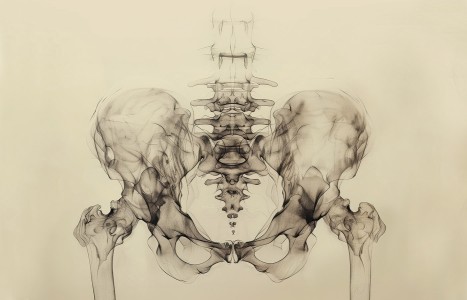People today want convenience, whether it be from their bank, credit card, favorite retail store, or restaurant. They demand it from the companies who hold their loyalty, including their health care providers (you). They don’t want to call and possibly be put on hold, and they want to use an app or schedule an appointment on your website. Here are three reasons your practice can gain by switching to online appointment scheduling.
Global Solutions to a Global Health Care Problem
In the many years since HIV/AIDS was first acknowledged as an epidemic, we have learned a great deal about our immune system and how it relates to opportunistic infections that we may encounter. Since the HIV disease has spread worldwide, no health care provider can be blind to the fact that some of our patients will present with symptoms of this disease and related co-infections. You may ask yourself, "Why should I be concerned about this disease?" The recent XVII International AIDS Conference, held Aug. 3-8 in Mexico City, highlighted facts of which we must be aware because they affect all of our practices.
To review the latest news from the conference: The pandemic is still going strong all over the world. The current low estimate of those living with HIV/AIDS worldwide is 33.2 million people, with 68 percent being in sub-Saharan Africa. More than 25 million have already died from AIDS. In the U.S., the new estimates show that gay and bisexual men of all races and ethnicities, and African-American men and women are the groups most affected by HIV. Fifty-three percent of all new infections in 2006 in the U.S. occurred in gay and bisexual men. African Americans, while comprising 13 percent of the U.S. population, accounted for 45 percent of the new HIV infections in 2006.
We are far from a cure, and we cannot address the disease just from a biomedical standpoint. We must focus on social reforms to prevent the disease from spreading. There needs to be more vocal discussions in our communities about sensitive issues including drug use, homophobia and gender violence; these are the major contributory factors that affect the spread of HIV.
In sub-Saharan Africa, 61 percent of women are infected. The African Strategy to prevent the spread of disease utilizes an approach called ABC:
Abstinence and delayed sexual debut for the inexperienced;
Being faithful to one's sexual partner and proper and consistent use of condoms; and
Circumcision for all males, which has been proven to reduce HIV transmission.
This evidence-based behavior strategy has shown to decrease the overall HIV infection rate by as much as 90 percent in some key regions of Africa. Education has been shown to be as important as drug therapy to decrease the spread of HIV. From a biomedical approach, there are three steps necessary to eradicate HIV from an infected person's body:
- Stop HIV from replicating (which is now possible through the current treatment methods of combinations of antiretroviral [ARV] medications).
- Identify the areas of the body where HIV still persists.
- Eliminate the HIV reservoirs.
Currently, the treatment methods include a medication regimen using a combination of three highly active ARV drugs, which are much more effective than the use of a single drug because they interfere with the HIV at multiple stages in the life cycle. All ARV drugs are designed to block virus reproduction in cells and allow an increase in the immune-system cells (CD4 lymphocytes).
These current treatment methods are extending the lives of millions of HIV-infected people. Unfortunately, millions more are not getting the access to the drugs they need, especially children in the poorer countries. The reason is because prevention, care and the treatment of HIV are being left to families and communities. Without assistance, they are overburdened and/or do not have access to care.
Scientists are continuing to develop new drugs to treat HIV/AIDS. The goals for the future include reducing toxicity of the ARV regimens, simplifying the treatment regimens and decreasing drug resistance. Part of the problem in dealing with new treatments is that the HIV virus mutates continuously and patients develop resistance to existing medications. Thus, there is no one approach that can be uniform across the board in treating patients.
The ultimate goal in the treatment is to find a medication that has no side effects, is inexpensive, and doesn't matter if a dose is missed. Here are some facts:
- In high-risk individuals (homosexual men, African Americans, female sex workers) only one in four gets tested to determine their HIV status, which translates into many people not getting tested and thus being more likely to spread the disease.
- A person treated today at an early stage will likely live a long life. For example, if a 20-year-old gets infected today and receives appropriate treatment, they can expect to live into their 60s.
- At this stage, the development of HIV vaccinations (more than a billion dollars spent so far), has not met with success. In other words, HIV vaccines do not prevent HIV infections. Not one study has been published proving otherwise.
- HIV/AIDS predominantly affects the 15-49 age group, which translates into the most productive and reproductive years. This has the potential of severely affecting the economies of nations, with only the orphaned children and the older people remaining in some developing countries.
- Current HIV prevention methods, such as condom use, monogamy and abstinence, are not always feasible. Microbicides, which are a female-initiated, preventative method applied vaginally to prevent HIV and sexually transmitted acquisition during sex, have been tested, but the current preparations have not been proven to be effective.
Here are the recommendations for the traditional-based allopathic practice using an evidence-based approach for the care and treatment of individuals who may be at high risk:
- Screen for HIV transmission risk behaviors and STDs.
- Provide brief, behavioral, risk-reduction interventions in the office setting and refer selected patients for additional prevention interventions and other related services.
- Facilitate notification and counseling of sex- and needle-sharing partners of infected people.
- We must be educated so we can give our patients the best recommendations for their care. This does not mean refer out and not treat. It means co-treat the patient: Help keep the immune system functioning at a higher level, and at the same time refer the patient to a specialist in infectious disease for treatment. Make sure you are suggesting a healthy diet to your patients and include exercise in the regimen of care.
We have always known that a proactive approach to maintaining a higher quality of life is the preferred method for our patients. In order to do this, we must continually educate ourselves and then our patients.
Resources
- Incorporating HIV Prevention into the Medical Care of Persons Living with HIV: Recommendations of CDC, the Health Resources and Services Administration, the National Institutes of Health, and the HIV Medicine Association of the Infectious Diseases Society of America.
- CDC. Advancing HIV prevention: new strategies for a changing epidemic - United States, 2003. MMWR, 2003;52:329-32.
- Global HIV Prevention Working Group, 2008.


